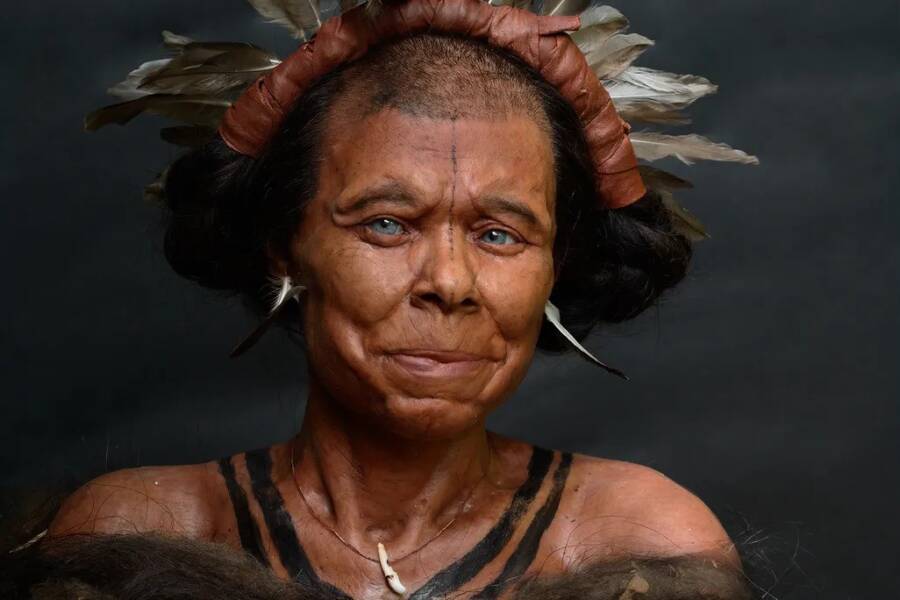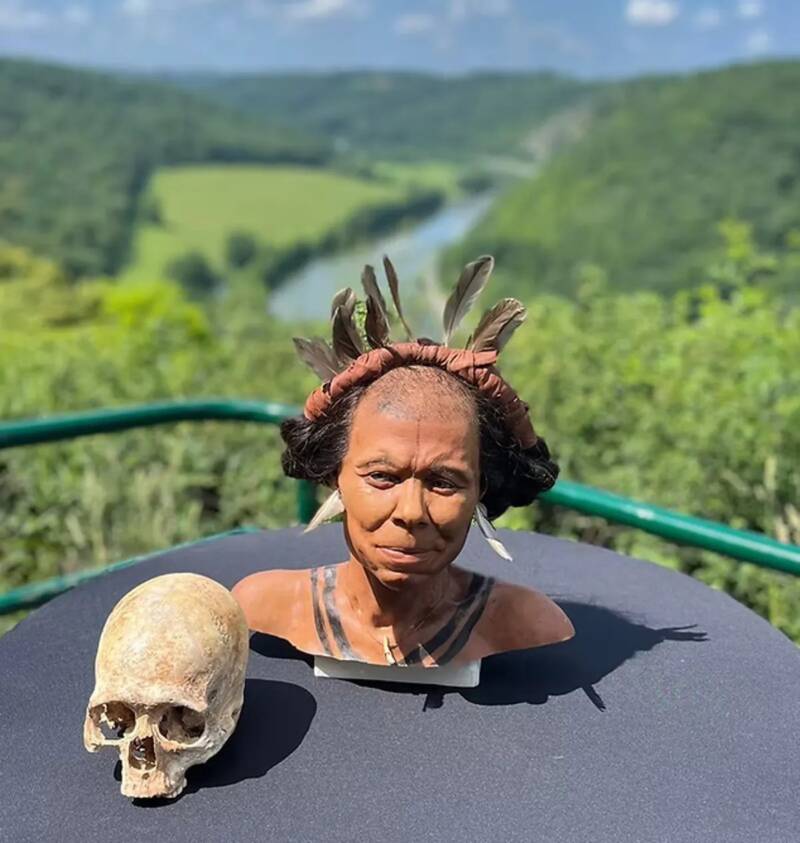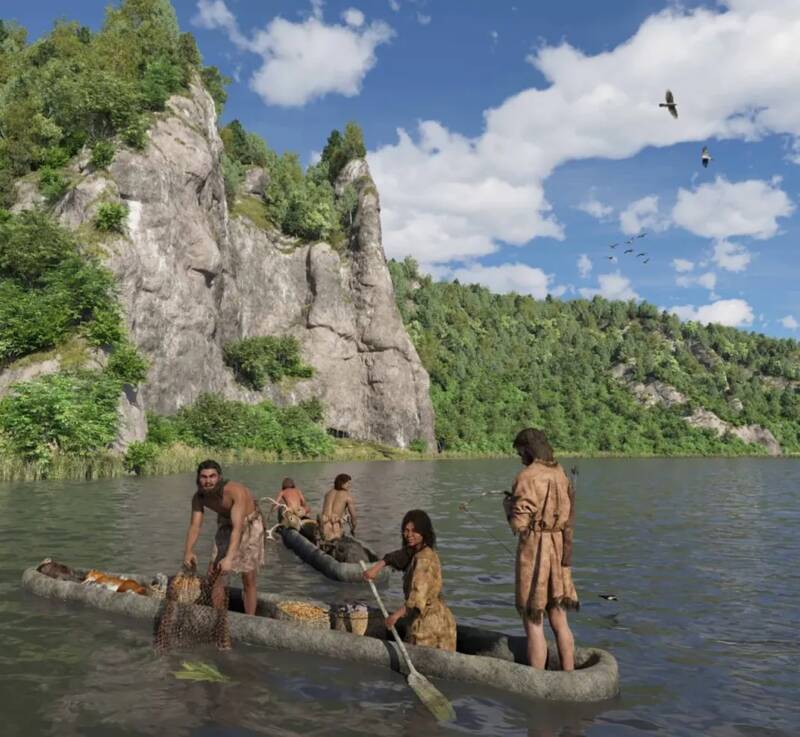The woman had lighter skin than other hunter-gatherers who lived in Western Europe at the time, revealing that Stone Age humans in the area had a wider range of skin tones than scientists previously believed.

Kennis and Kennis Reconstructions/Ghent UniversityThe Stone Age woman had dark hair and blue eyes.
In 1988, excavations at Belgium’s Margaux cave revealed the burial of several Stone Age women. Now, a study of one woman’s DNA has helped artists produce a facial reconstruction to show what she looked like.
Like other ancient humans previously uncovered in Europe, the Stone Age woman had dark hair and blue eyes. However, her skin tone had a “subtle but important” difference.
Reconstructing A Stone Age Woman’s Face
The remains of the Stone Age woman were first discovered in 1988 during excavations in Margaux cave near Dinant, Belgium. The discovery was intriguing, as the woman was found buried with several other women — and not with men and children, as is more common with Stone Age burials — but researchers didn’t yet have the tools to study her DNA.
That changed this year, thanks to a project led by Ghent University. After analyzing the Stone Age woman’s DNA, researchers worked with Kennis and Kennis Reconstructions to recreate her face.
The woman’s skull showed that she had a high nasal bridge and strong brow ridges, and her DNA revealed that she was between the ages of 35 and 60 when she died. Scientists also used her DNA to determine that she had dark hair, dark skin, and blue eyes.

Kennis and Kennis ReconstructionsA 3D reconstruction of the Stone Age woman’s face, alongside her skull.
The fact that the woman had dark skin is not surprising to researchers — most ancient people in Europe, including the famous “Cheddar Man,” also had dark skin. However, the Stone Age woman had slightly lighter skin than other remains uncovered from the same time period, which struck researchers as important and intriguing.
Her skin tone is a “subtle but important detail,” Maïté Rivollat, the chief geneticist of the project, remarked in a Ghent University statement.
Rivollat continued: “Until now, the phenotypic diversity among European hunter-gatherers was only known from a small number of fossils and was thought to be fairly homogeneous.”
According to the university’s Regional Outlook on Ancient Migration (ROAM) project, which oversaw the reconstruction, the woman’s skin tone suggests “that variation in skin color existed before farming began” and that such variations “may have been influenced by factors like diet, migration, and climate.”
But skin tone was ultimately just a small part of this woman’s life.
The Stone Age Woman’s Life 10,500 Years Ago

Vakgroep Archeologie/illustratie Ulco GlimmerveenResearchers also produced a reconstruction of how the Stone Age woman likely once lived.
Based on artifacts that have been discovered in the surrounding Meuse Valley, researchers believe that the Stone Age woman was part of a group of Mesolithic (Middle Stone Age) hunter-gatherers who lived some 10,500 years ago. These artifacts, which include animal and fish remains and stone tools, suggest that her people were nomadic, because they would have moved around to find these resources.
But while researchers have a rough idea of how the woman lived, her death is somewhat more unusual. The woman was found buried with eight other women, unlike other Mesolithic burials, which generally include a mix of men, women, and children. Speaking to CNN, archaeologist Isabelle De Groote of Ghent University also stated that some of the skeletons were sprinkled with ochre, which is “associated with ritual or symbolic behavior,” and that the bodies were covered with stone fragments. One of the bodies had cut marks on her skull that were made after she had died.
The cave was seemingly used as a burial site for several centuries, which is also intriguing, as it suggests that even nomadic people would return to “places of memory… despite their mobile hunter-gatherer lifestyle.”
All in all, the study of the Stone Age woman has offered a fascinating look back at the life of ancient humans during the Mesolithic period. Researchers now have a better idea of what some Mesolithic people looked like — and they need a name for the woman. They’ve suggested three options: “Margo,” based on Margaux cave; “Freyà,” based on the nearby Freyr mountain range; and “Mos’anne,” based on the Meuse river basin.
Voting is open to the public.
After reading about the facial reconstruction of the Stone Age woman whose remains were found in Belgium, learn about some of Europe’s most famous bog bodies, the well-preserved human remains that have been dredged up from bogs. Or, discover the story of the Lovers of Valdaro, the Stone Age skeletons that were found in an eternal embrace.





